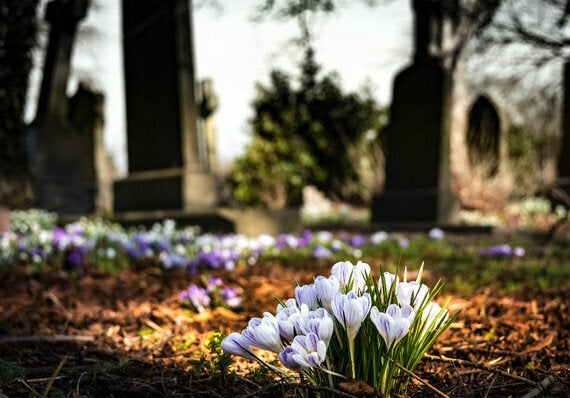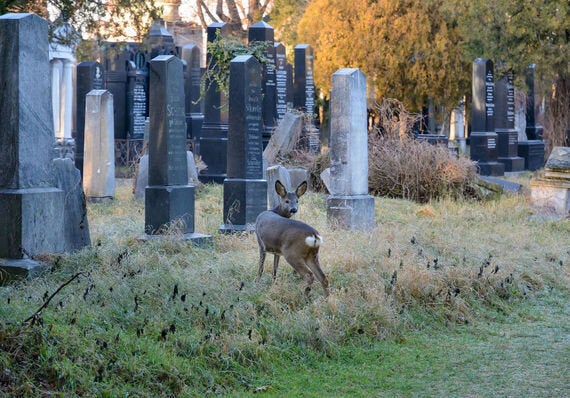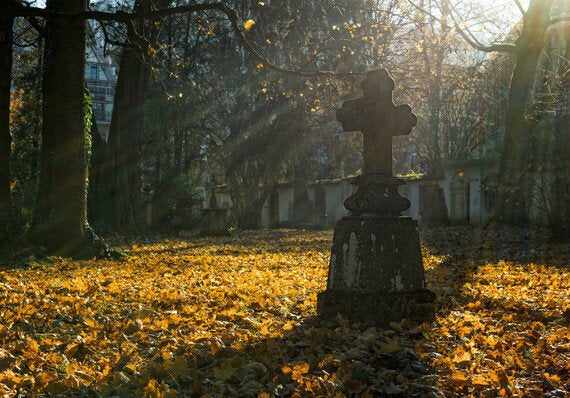
I have something to confess. I am a taphophile.
It's not as weird as you think and lots of people do it. You might even enjoy it yourself, if you gave it a try.
I'm talking about tomb tourism. Many fellow taphophiles (that's a lover of gravestones and cemeteries) and I regularly take time out of our weekends to wander among the dearly departed, taking in the sights and sounds of the graveyard.
Why? Because it's about as fascinating and enlightening as any hobby could be.

Photo by Pixabay
A couple of weeks ago, Guardian columnist Barbara Ellen caused a bit of a stir by calling the pastime of tomb tourism an activity for "Big Fat Goths".
The short opinion piece is a joke - I hope. I don't suppose Ms Ellen is really dismissing all taphophiles as morbid and morbidly obese. But the punchline fell rather flat with those commenting on the Guardian's website. Confidence wasn't high, starting with the repeated use of the misspelt 'tapophile' (someone who likes plumbing?) and ending with the article's supposedly affectionate labelling of graveyard enthusiasts as obese.
"How about calling them historians, social investigators and academics - even people just interested in the past?" said one commenter.
"I read Barbara's short opinion piece on Tapophiles [sic] and didn't find it at all affectionate," said the Graveyard Detective, a keen lover of funerary art who chronicles his own journeys through Britain's cemeteries on his website.
"I wander through cemeteries and churchyards, reading the inscriptions and touching epitaphs, and collecting stories of tragedy, heroism and dedication. I also photograph the wonderful sculptures and grave art, and liken the experience to visiting an open-air art gallery/museum."
Why get so uptight about such a short opinion piece, you may ask? I suppose it's because taphophiles are a little bit weary of being painted as goths and weirdos. Not that there's anything wrong with liking black lipstick, but there's so much more to tomb tourism than indulging a "taste for the macabre", as Barbara Ellen puts it.
Cemeteries are places of beauty, which can be appreciated by everyone. Many graveyards have become a paradise for wildlife, small green oases in the midst of grey concrete cities, or expanses of woodland on the outskirts of towns.

Photo by Uoaei1 via Wikimedia
What a shame for the tranquillity and peace of the graveyard to be ignored, just because death has become taboo in the modern age.
Sure, we're happy to kick back and watch a violent action film filled with death, or blast people to smithereens in video games - those are normal hobbies. But take an interest in the final resting places of people just like you and me, people who lived, loved and died, and suddenly it's considered a bit creepy.
Cemeteries are places of history and heritage. Archaeologists have always looked to tombs and memorials for clues about the people of a former age. As the Graveyard Detective puts it: "Our social history is written on those stones."
Cemeteries are also enlightening, a place for calm reflection. Looking upon the gravestone of a young woman who died aged 23 over 200 years ago, I'm reminded that no matter what petty grudges or insignificant worries I have today, they'll soon be gone, as will I. The graveyard reminds me that I am just an immeasurably small part of the ongoing story of human history.

Photo by Pixabay
I am never less afraid of death than when I am in a cemetery. It's my version of staring at the sun, to borrow psychiatrist Irvin.D. Yalom's metaphor. Yalom suggested that an underlying fear of death subtly affects all aspects of our life and that confronting death, even when it's painful, is vital.
"It's not easy to live every moment wholly aware of death. It's like trying to stare the sun in the face," says Yalom.
"I would recommend staring into the sun to no one, but staring into death is quite another matter."
He continues: "I believe that we should confront death as we confront other fears. We should contemplate our ultimate end, familiarise ourselves with it, dissect and analyse it, reason with it."
This is exactly what I try to do when I am visiting a cemetery. Beyond enjoying the peace and quiet, it's a reminder for me to embrace the transience of life and therefore enjoy the present moment more fully.
In an age when we're becoming increasingly less familiar with death, when the dying are sequestered away in hospitals and we're told not to talk about "morbid" things like what kind of funeral we want, "staring at the sun" is more important than ever. It helps us learn and live.
If you want to give it a go and need some inspiration, why not check out this Famous Graves Finder, asking the British public to join in charting the final resting places of the late and great. Find A Grave has millions of cemetery records and Geograph has hundreds of photos of beautiful, forgotten and famous graves as part of its ongoing collaborative geography project.
Whether you want to enjoy nature, learn more about local history, or find time to reflect on life's big questions, this is a hobby that anyone can enjoy. And you don't even need to wear black.